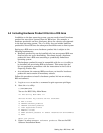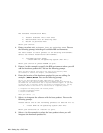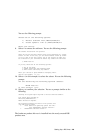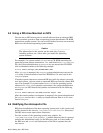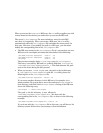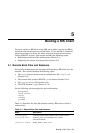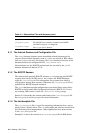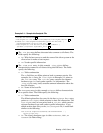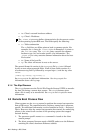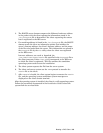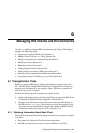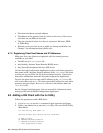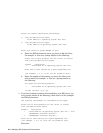
Example 5–1: Sample /etc/bootptab File
.ris.dec:hn:vm=rfc1048 1
.ris0.alpha:tc=.ris.dec:bf=/var/adm/ris/ris0.alpha/vmunix: 2
atlanta:tc=.ris0.alpha:ht=ethernet:gw=nn.nn.nnn.nnn:\
ha=nnnnnnnnnnnn:ip=nn.nn.nnn.nnn :
3
.ris93.alpha:tc=.ris.dec:bf=/ris/ris93.a/vmunix: \
rp="ds9:/ris/ris93.a/product_001":
4
1 The .ris.dec entry defines characteristics common to all clients. The
fields specify the following:
• hn: Tells the boot server to send the name of the client system to the
client when it makes a boot request.
• vm: Vendor-specific information
2 The .risN.arch entry, in this example .ris0.alpha, defines
characteristics common to all clients using this RIS area. The fields
specify the following:
• tc: Table continuation
The tc field lets you follow pointers back to common entries. For
example, the tc entry for .ris0.alpha in Example 5–1 points to
the .ris.dec entry. The .ris.dec entry contains the common
hardware type (ht) and vendor specific (vm) information. The
.ris0.alpha entry, itself, contains common information about the
boot file location.
• bf: Name of the boot file
3 The hostname entry, in this example atlanta, defines characteristics
for a specific client. The fields specify the following:
• tc: Table continuation
The following describes the entry for the host atlanta: its tc entry
points to ris0.alpha, which contains its boot file information. The
ris0.alpha entry in turn points back to ris.dec, which contains
relevant hardware type and vendor specific information. If you
added another host entry to the /etc/bootptab file, it would look
similar to the following:
lee:tc=ris0.alpha:ht=ethernet:ha=nnnnnnnnnnnn :\
ip=nn.nn.nnn.nnn :
• ht: The client’s hardware type is either ethernet, fddi,or
ieee802 (for Token Ring)
Booting a RIS Client 5–3



